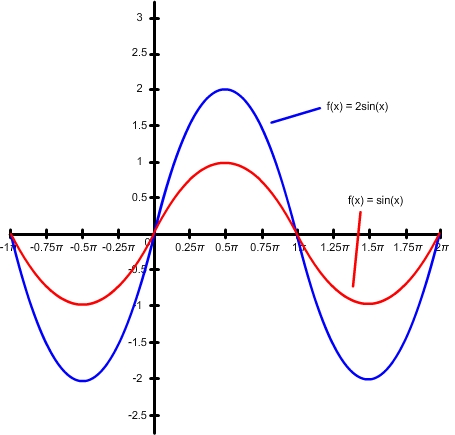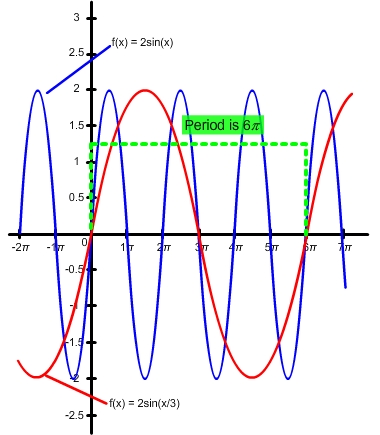Example
Now you can put what you have learned about amplitude and period together as you continue to build on the knowledge of graphing transformations of trigonometric functions. Work through the following example:
Graph  . What is the amplitude and period of this function?
. What is the amplitude and period of this function?
A = |2| = 2; therefore, the amplitude is 2.
In this case,  , so the period is equal to
, so the period is equal to  .
.
It is best to graph this function in pieces so that you can see what is going on.
The following is the graph of f(x)= sin(x) and f(x)= 2sin(x). Notice that the amplitude has changed from a value of 1 to a value of 2.

Now look at the graph below for f(x)= 2sin(x) and  . Notice that the final function has a period of
. Notice that the final function has a period of  radians.
radians.
